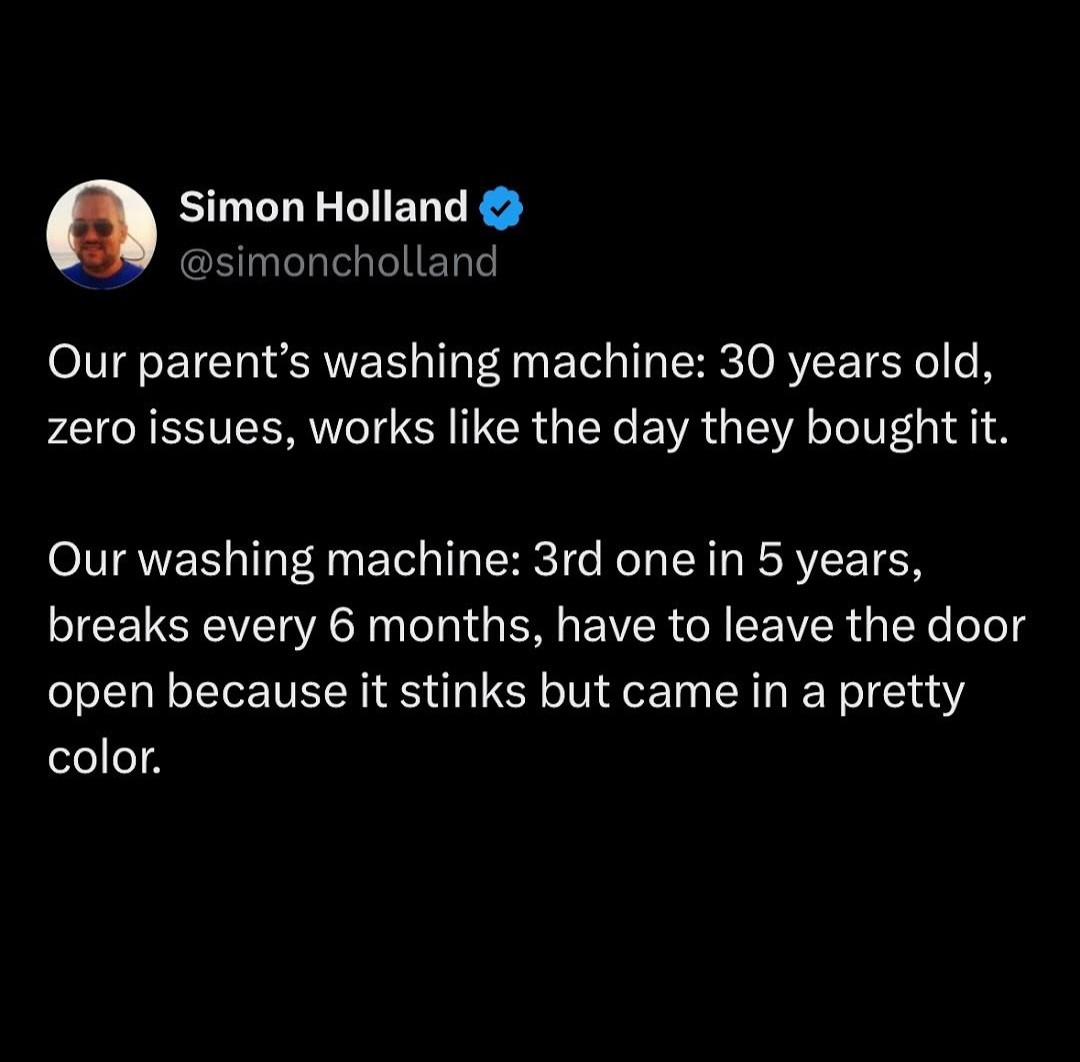this post was submitted on 02 Jul 2025
822 points (95.9% liked)
Microblog Memes
8406 readers
2212 users here now
A place to share screenshots of Microblog posts, whether from Mastodon, tumblr, ~~Twitter~~ X, KBin, Threads or elsewhere.
Created as an evolution of White People Twitter and other tweet-capture subreddits.
Rules:
- Please put at least one word relevant to the post in the post title.
- Be nice.
- No advertising, brand promotion or guerilla marketing.
- Posters are encouraged to link to the toot or tweet etc in the description of posts.
Related communities:
founded 2 years ago
MODERATORS
you are viewing a single comment's thread
view the rest of the comments
view the rest of the comments

Idk about other people, but this is actually harder than you'd think. I've got zigbee and zwave hubs in my house for my home automation system, but there's really not anything that uses those technologies and has the screwy power plug my washer has. I grabbed some inducement sensors (I think that's what they're called), but I can't use them near my washer since they have to be hooked to the line to have a reference and my washer is too far away from my fuse box.
In the USA I use a Zooz Zen15 on the power plug for my heat pump dryer (120v). This works very well to notify my Alexa system that the dryer cycle is complete, and turns the dryer off. The Zooz is a zwave device connected to an Aeotec zwave hub.
Which country is this? I think both American and European (or at least Norwegian) washers use standard plugs (although American dryers do not), so I'm just curious which areas use something custom for that.
A regular plug should be able to supply a washer with power, but dryers are a different story in countries using 110V power.